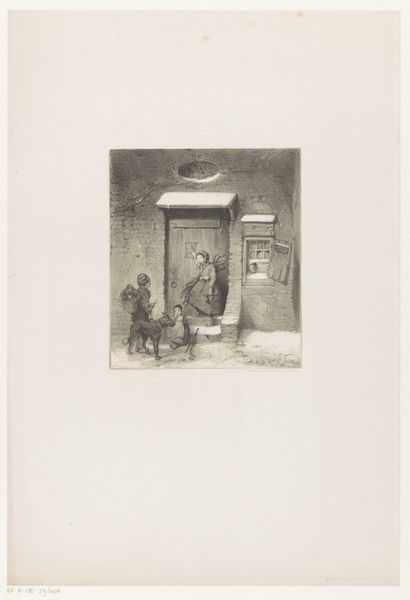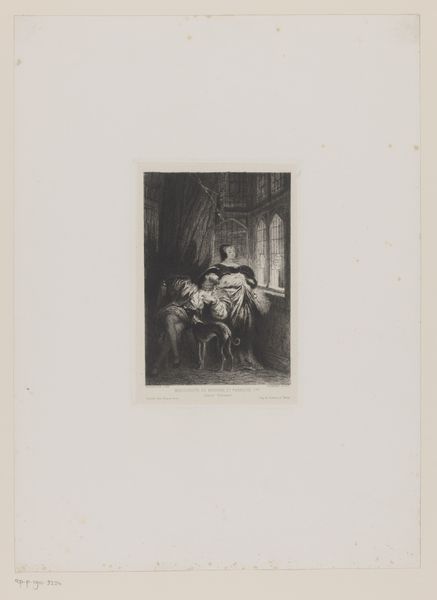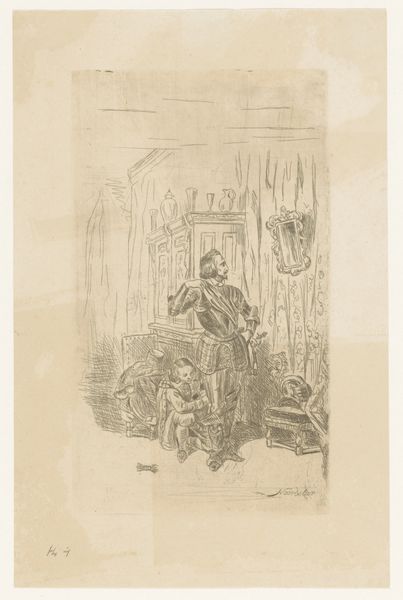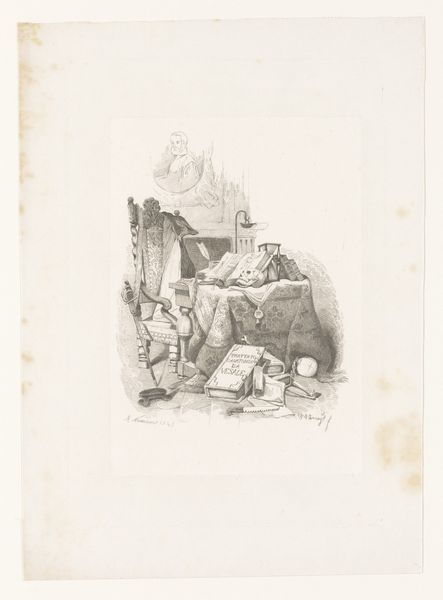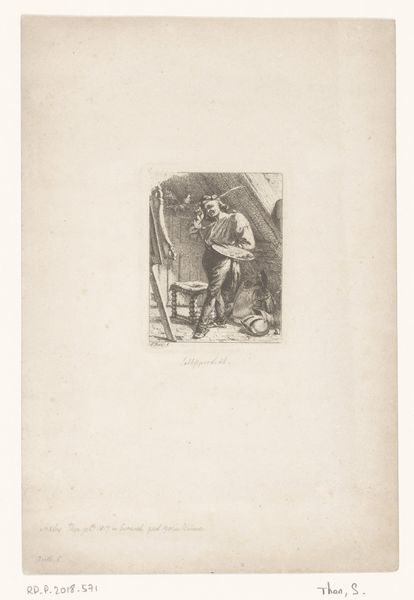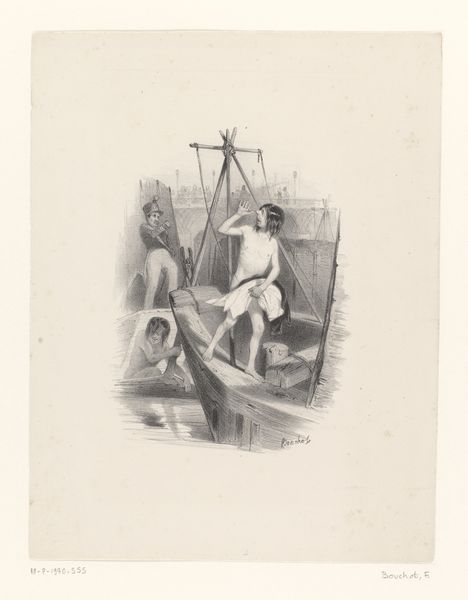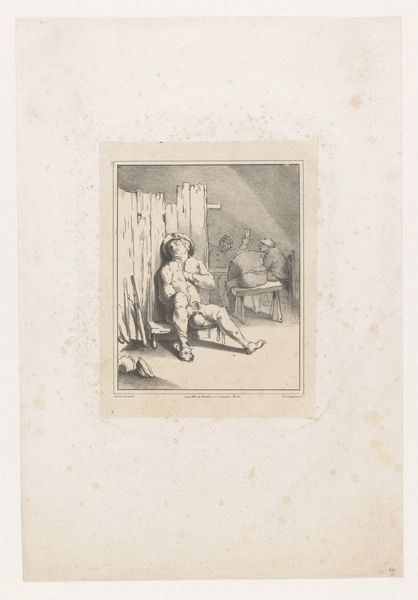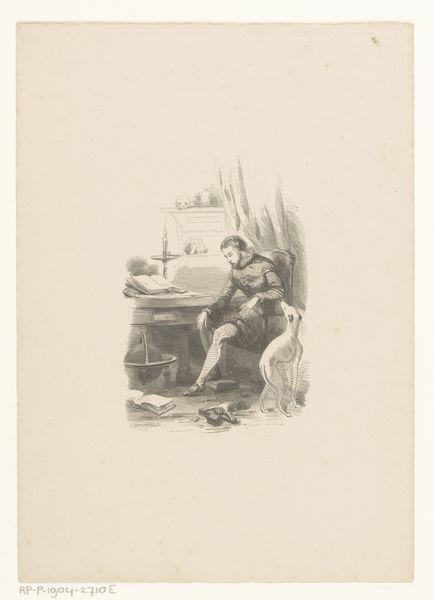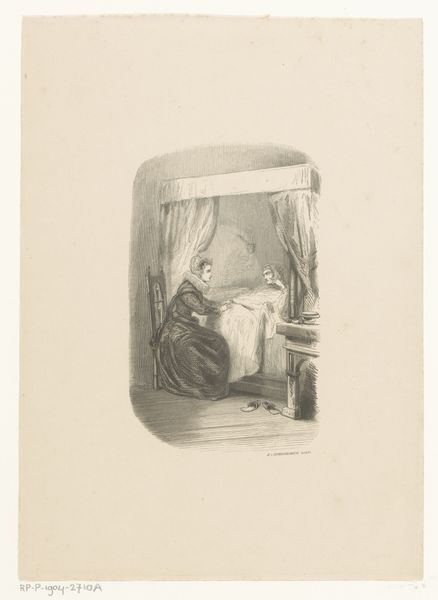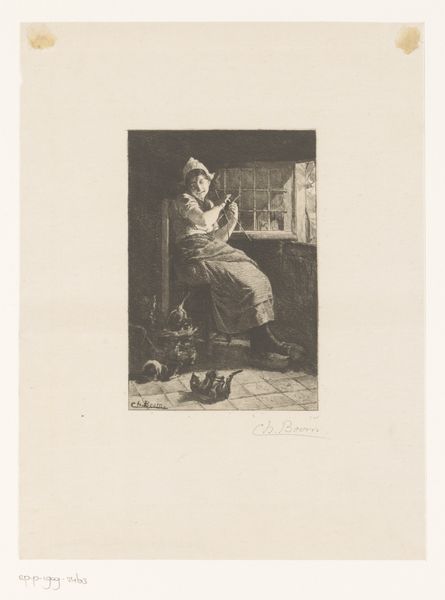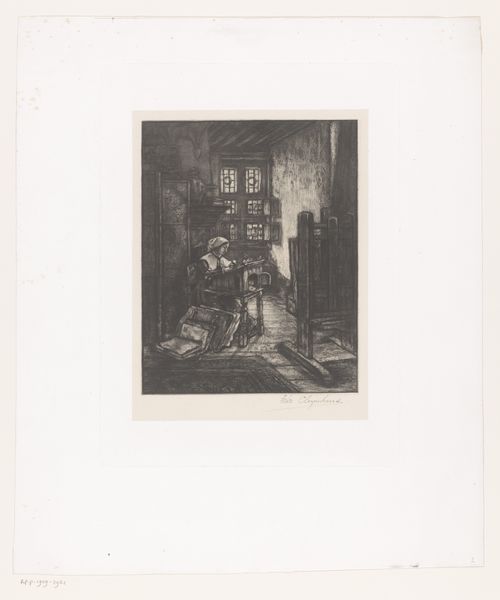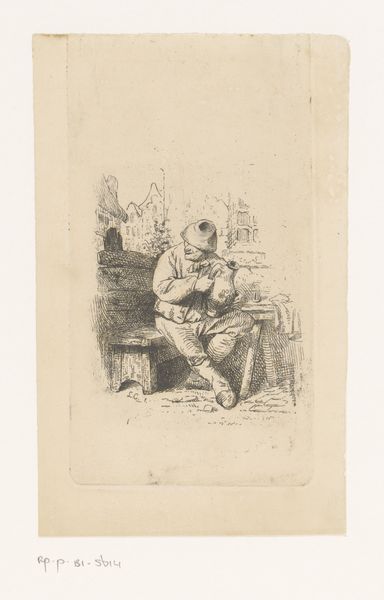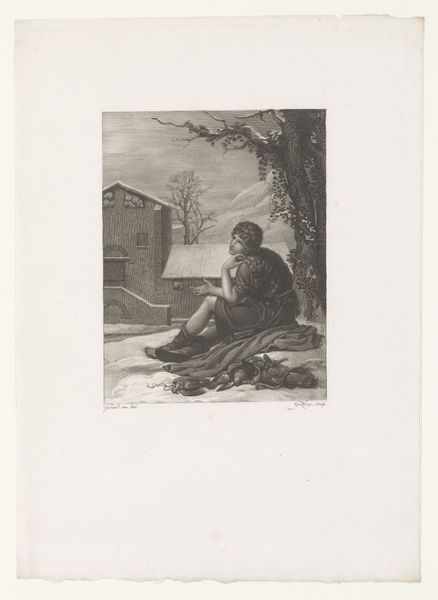
Dimensions: height 254 mm, width 182 mm
Copyright: Rijks Museum: Open Domain
Editor: Here we have Edouard Vermorcken’s "Man bij knielende vrouw voor een altaar," a pencil and paper drawing from between 1830 and 1904. It’s quite a somber scene – a man and a woman kneeling before what looks like an altar, another man stands nearby. What do you see in this piece? Curator: What strikes me is how Vermorcken positions the woman. Kneeling was often demanded, especially of women. Think about the performative aspect of faith, the enforced submission. How does the physical act of kneeling reinforce or challenge patriarchal structures of power? Does it appear to be her own choice to kneel, or is it coerced in some way? Editor: That’s interesting. I hadn’t considered the power dynamics involved. I was focusing more on the apparent grief or distress in the scene. Curator: The setting too is important. Where are they and who benefits? Is it possible to connect the domestic sphere to this display of emotion? This might also be interpreted as the internal experience of social expectation, religious pressure and emotional burden that so many women would have faced during the period this was created. Is this devotion, obedience or a social cage? Editor: So, you're saying that, far from being simply a religious scene, it’s actually commenting on the constrained position of women within religious and social structures of that time? Curator: Precisely! It's crucial to examine how images like this can be interpreted beyond their surface. What does the body language tell us? Is she finding solace, or is she trapped? That’s what makes art so powerful - it forces us to confront these difficult questions. Editor: I see it in a new way now. Thanks to that analysis I think it highlights some compelling historical questions regarding power, control and agency. Curator: Absolutely. The personal is political, always, so let's challenge our assumptions about faith, submission, and representation whenever we engage with such artworks.
Comments
No comments
Be the first to comment and join the conversation on the ultimate creative platform.
